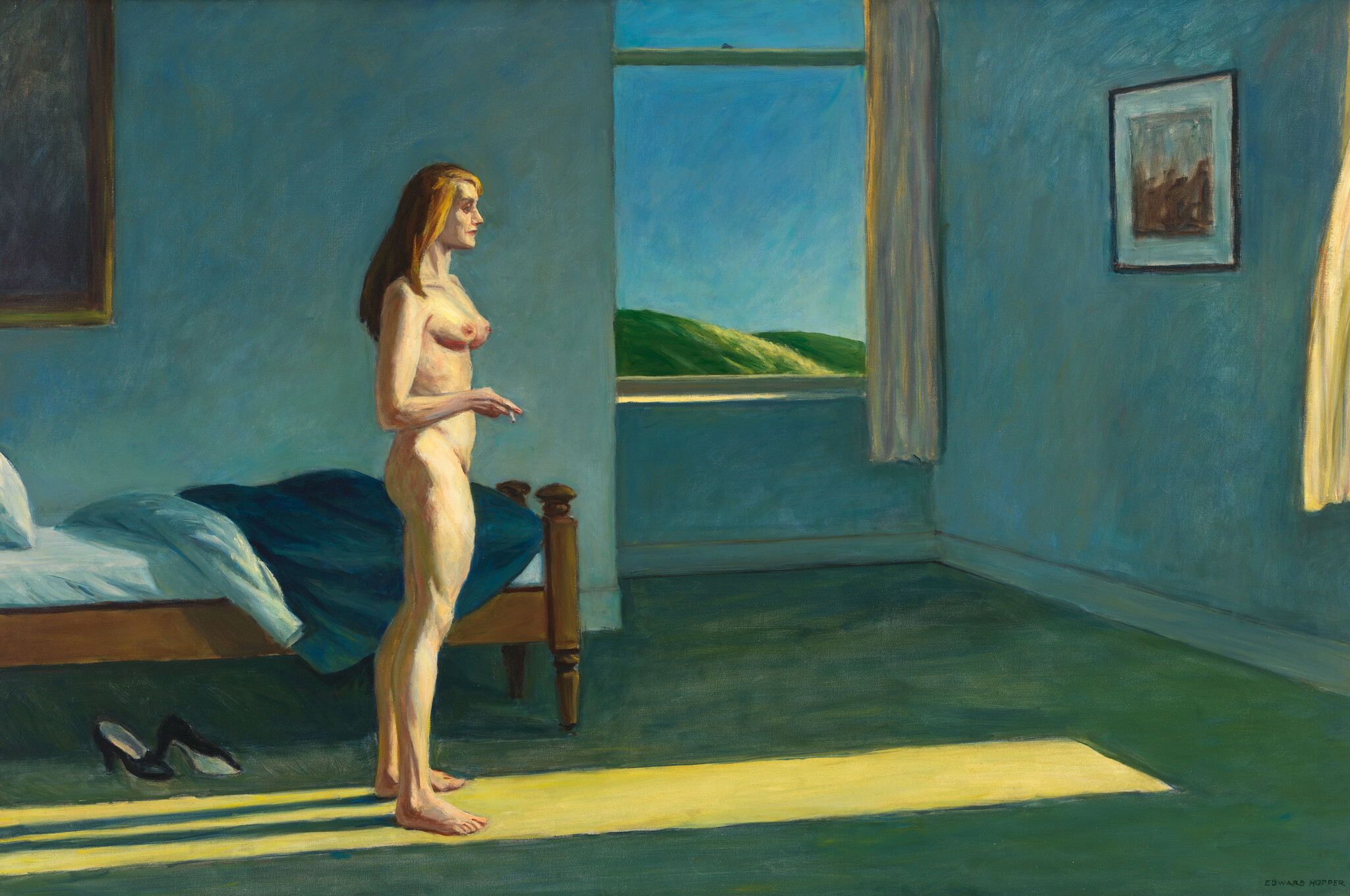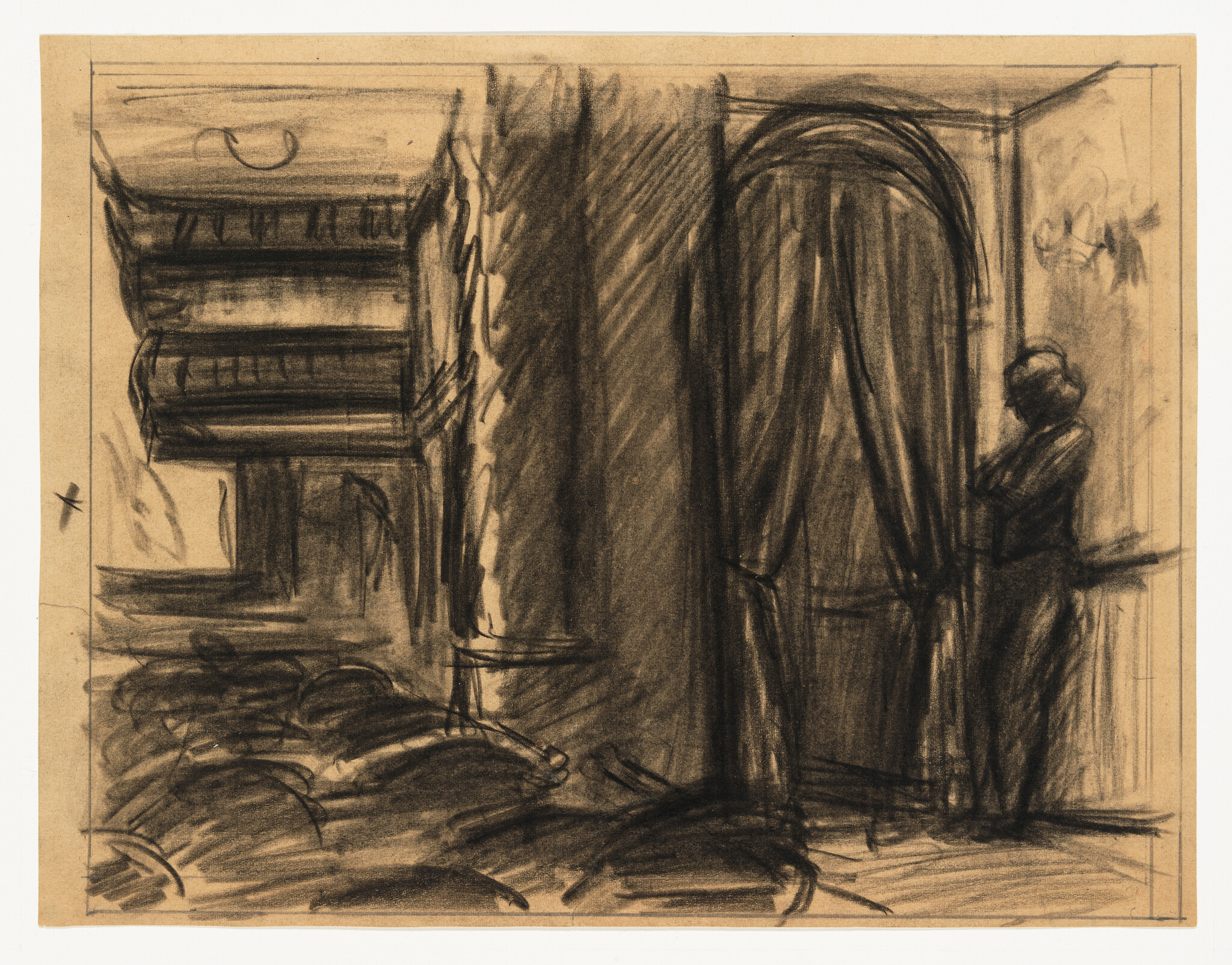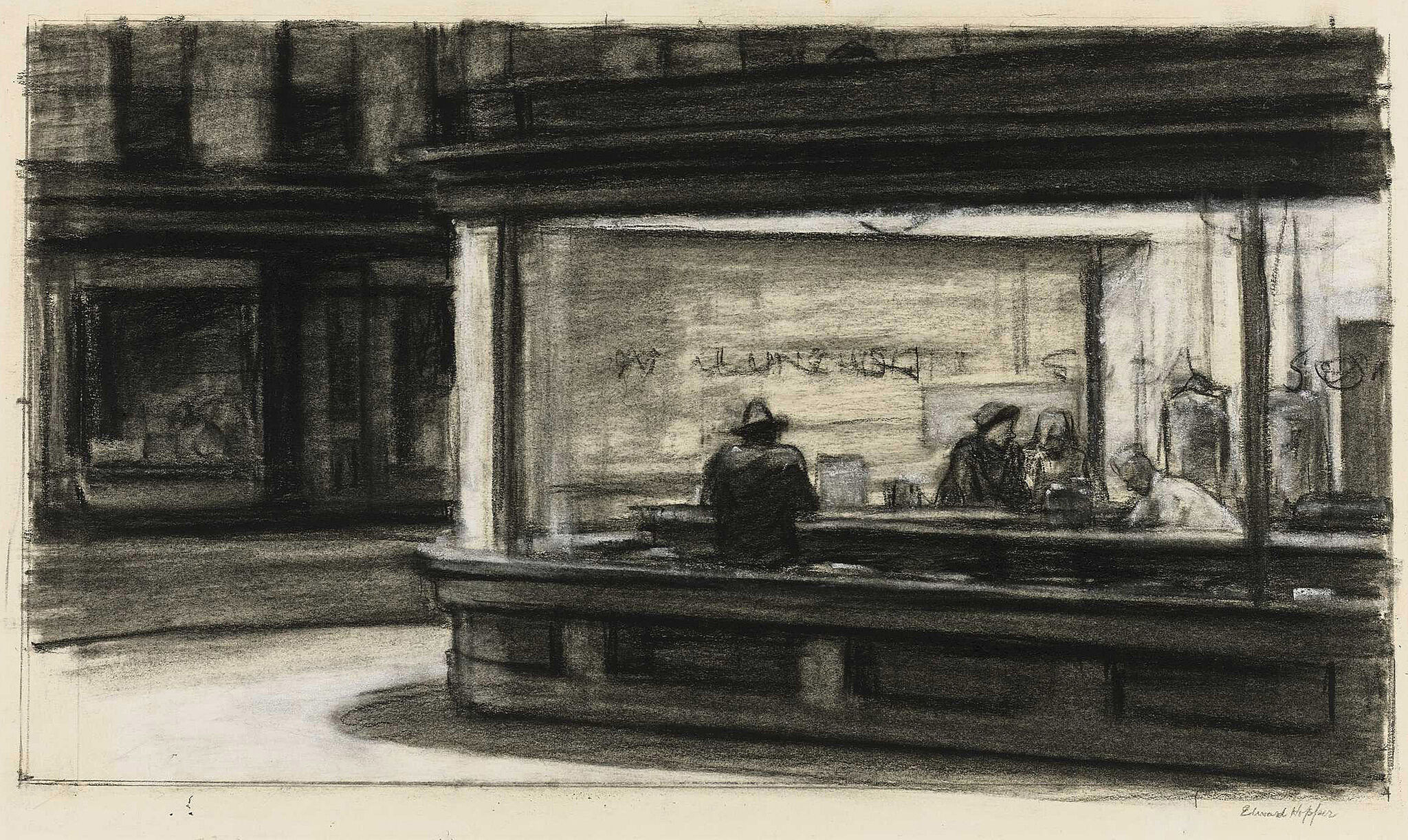Edward Hopper, Study for New York Movie (Palace Theatre), 1938
May 21, 2013
0:00
Edward Hopper, Study for New York Movie (Palace Theatre), 1938
0:00
Carter Foster: This is an important sheet because it's close to the painting, but it's not. . . It's the space that he was interested in, drawn in a very complete way, but it's not the space of the painting.
Narrator: In the final painting Hopper adds a poetic, ghostly image on the movie screen—and uses it to illuminate a few spectators. He emphasizes the strangely projecting ceiling lights. The big difference in the painting is the presence of the usherette. But subtle changes to the space that she occupies also have an important expressive effect.
Carter Foster: What's different is the spatial compression, the side aisle becomes smaller. The staircase becomes collapsed into an arched opening with a heavy curtain in front of it, as opposed to being much more open in the drawing. And the overall sense of space is much tighter in the painting, which affects the way you perceive this usherette. It's not that she's trapped, but she's wearing this uniform that's sort of militaristic and she's got a specific role she's playing within this ornate palace of escapism. That compression of space is something that is an important part of the painting's overall effect. And it's not something you get in the drawing.
In Hopper Drawing.



